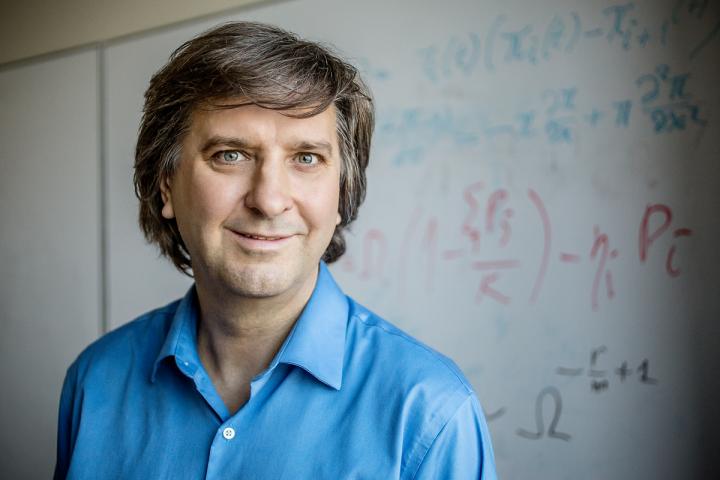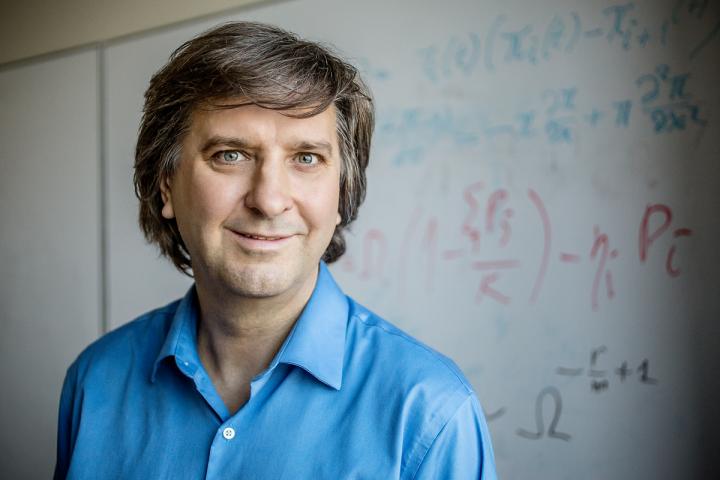
Credit: L. Brian Stauffer
A mathematical model created by University of Illinois researchers could help scientists better understand an intriguing characteristic of microbial communities: their ability to achieve stability despite being so diverse.
Microbial communities are groups of microorganisms that exist in a variety of environments — in the soil, in the oceans, and in our bodies. Though these communities are complex and diverse, they are able to form stable ecosystems.
Stability can be defined as how well the community handles change. Stable communities are able to resist a change in the nutrient supply or an invasion of a new species. Less stable communities are prone to change in the face of these disruptions.
Sergei Maslov, a Bliss Faculty Scholar, professor of bioengineering, and a faculty member in the Biocomplexity theme at the Carl R. Woese Institute for Genomic Biology, and Akshit Goyal, a visiting scholar from the Simons Centre for the Study of Living Machines at NCBS, in Bengaluru, India, have previously collaborated on a predictive model to measure microbial community stability based on an economic concept called the "stable marriage problem" as published in The ISME Journal. They recently created a mathematical model to further understand how microbial communities function and maintain stability.
"You have hundreds — if not thousands — of species coexisting in the same small volume," Maslov said. "It's almost like a rainforest in miniature."
Their study, published in Physical Review Letters, was recognized as an editor's choice in the journal and accompanied by a popular APS Focus article.
Their work addresses three signature aspects of microbial communities. The first is diversity, the amount of species that coexist in the community. The second is stability, and the third is reproducibility, which is how often a particular species will be present in a community.
Maslov again compares this aspect to a rainforest. A rainforest in South America and a rainforest in Africa might appear similar, but they each contain different species. It makes sense for this to be the case — it's unlikely for a native species of Africa to migrate to South America.
"In microbial communities, we cannot make this argument," Maslov said. "All the microbes, pretty frequently, are transported from one place to another, and yet you can have different sets of species in nearby patches of soil."
Their model considered this to try to understand which species are always universally shared in microbial communities, and which species are unique.
They found that a key ingredient in their model was a process known as cross-feeding. Microbes consume nutrients and then excrete metabolic byproducts, which return to the shared space of the microbial community and are consumed by other microbes.
"What we see in our model is the emergence of multiple levels of consumption of a nutrient," Maslov said. "Some microbes are at the top level, where they can directly access the externally provided nutrient. Some other microbes specialize in whatever is a waste product of this first microbe, and so on."
Maslov and Goyal wanted to see how many levels of consumption could coexist in a community, and found that it depends on how fast microbes grow – slow growth promotes higher diversity and a greater number of levels.
Another important factor in the community's ability to function is the maturity of the ecosystem. Mature ecosystems contain more species, and these species are more efficient in utilizing their resources. They used their model to characterize how much time is needed in order to describe a community as a mature ecosystem.
"We are trying to understand what makes particular states stable, and how many such stable states are out there," Maslov said. "What is the range of perturbations that a state can tolerate before changing it to something else or collapsing together?"
This work has implications for larger ecosystems throughout the world.
"Obviously we want to understand stability from the standpoint that we are perturbing the environment in an unprecedented way," Maslov said. "We want to understand how far we can push before everything collapses."
If scientists can understand this better, they can one day learn how to control microbial ecosystems. For example, a soil microbiome could perhaps be changed to a different state by adding microbes or nutrients. Because the systems are so complex and diverse, this is currently impossible to achieve.
"That's why our holy grail, in this and future work, is to be able to predictably and reliably control the transitions of the ecosystem from the state it is in to the state we want it to be," Maslov said. "We want to be able to do it without actually having some collapse."
###
Media Contact
Nicholas Vasi
[email protected]
@IGBIllinois
http://www.igb.uiuc.edu
Original Source
https://www.igb.illinois.edu/article/stable-marriages-between-microbes-nutrients-they-eat-may-explain-diverse-yet-stable http://dx.doi.org/10.1038/s41396-018-0222-x





